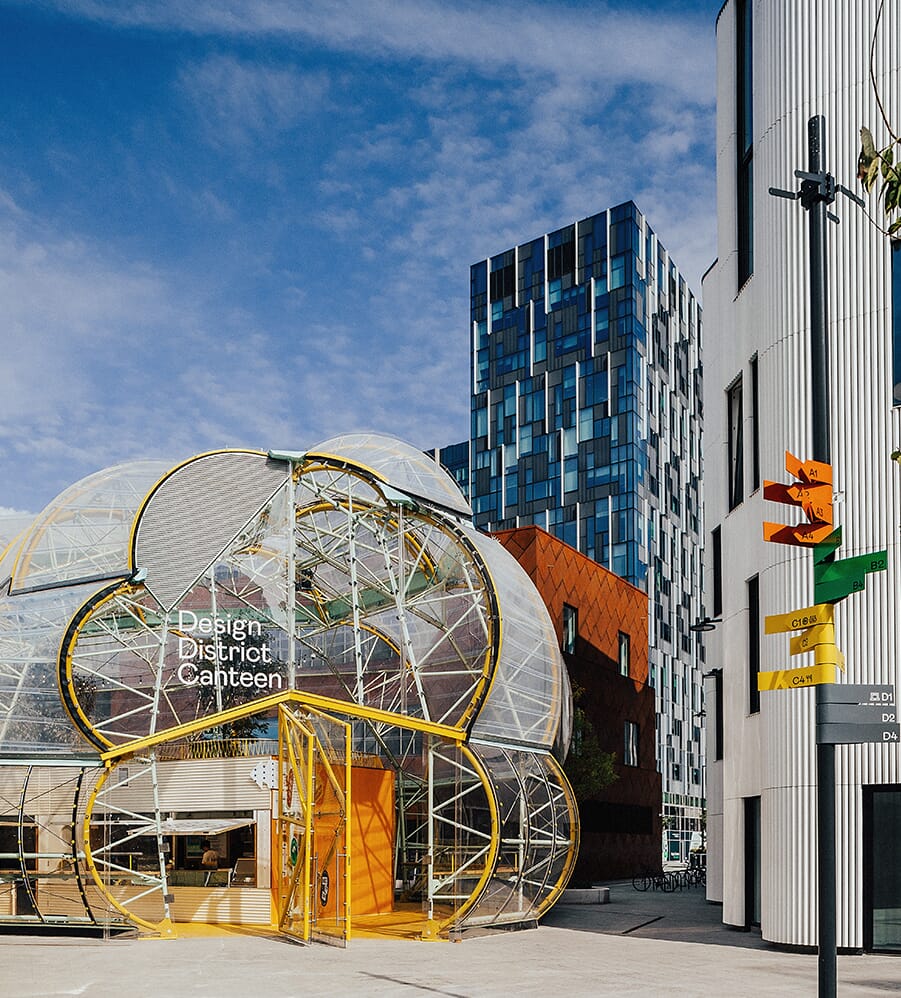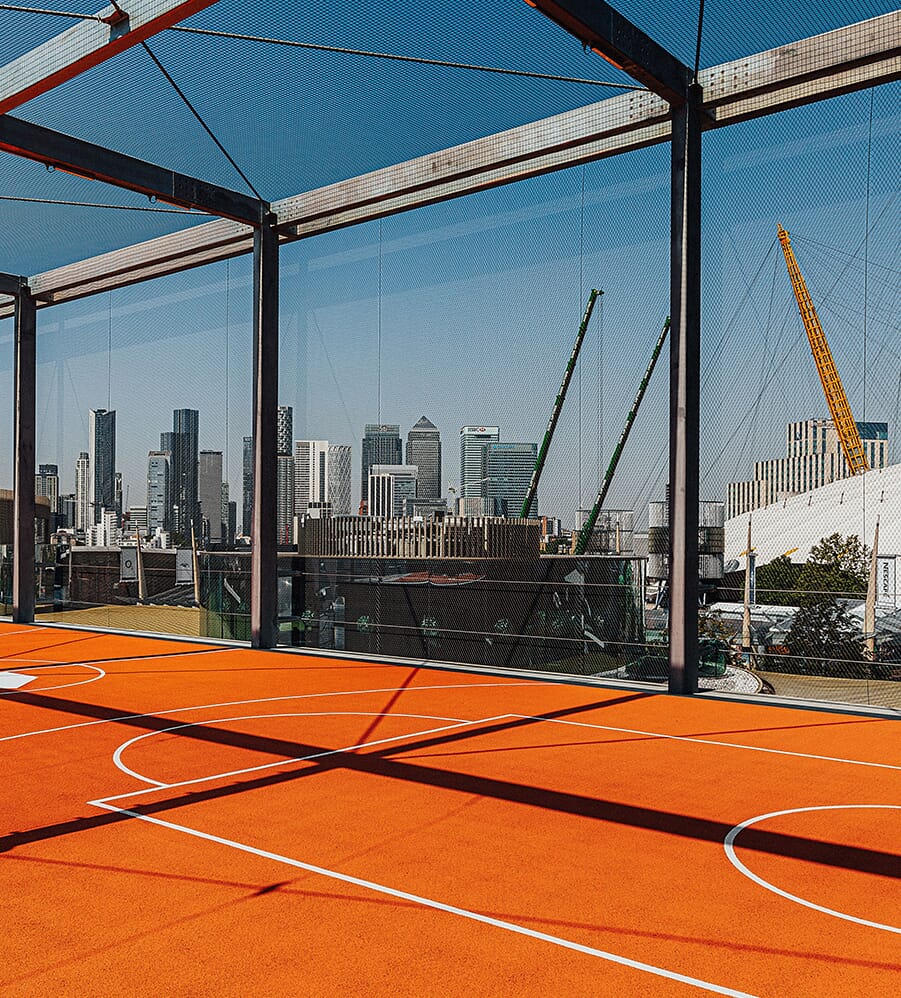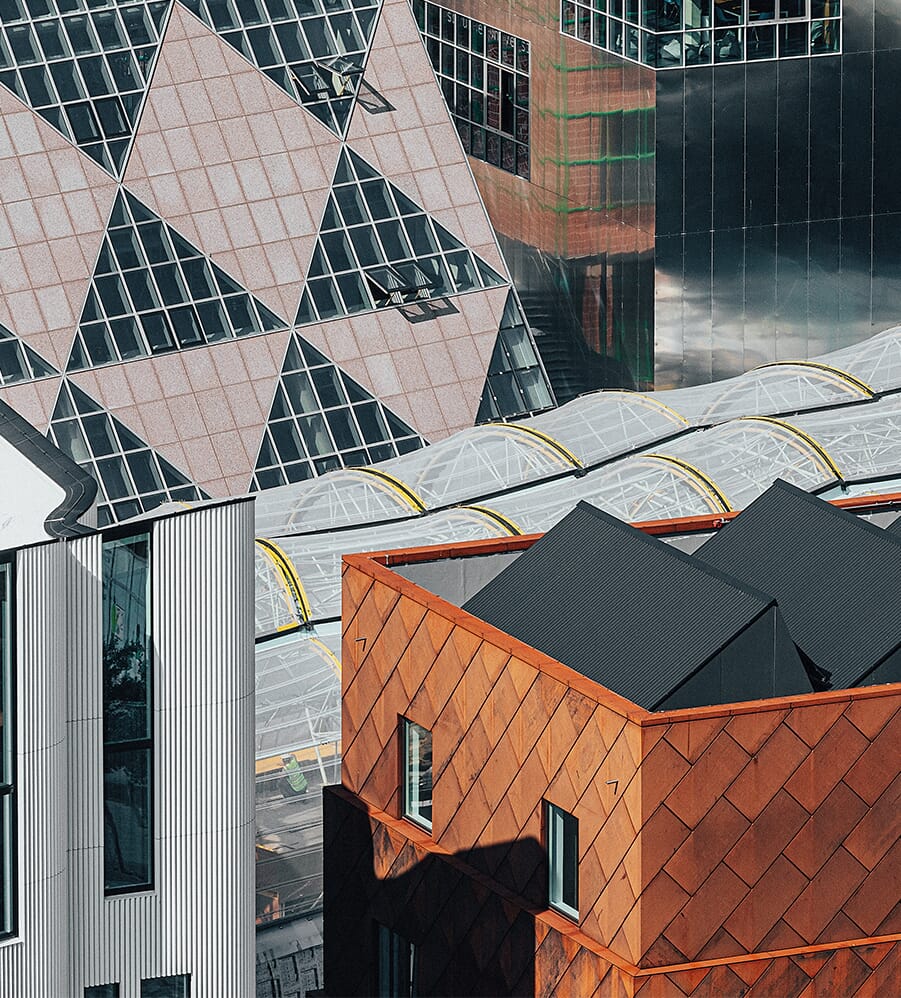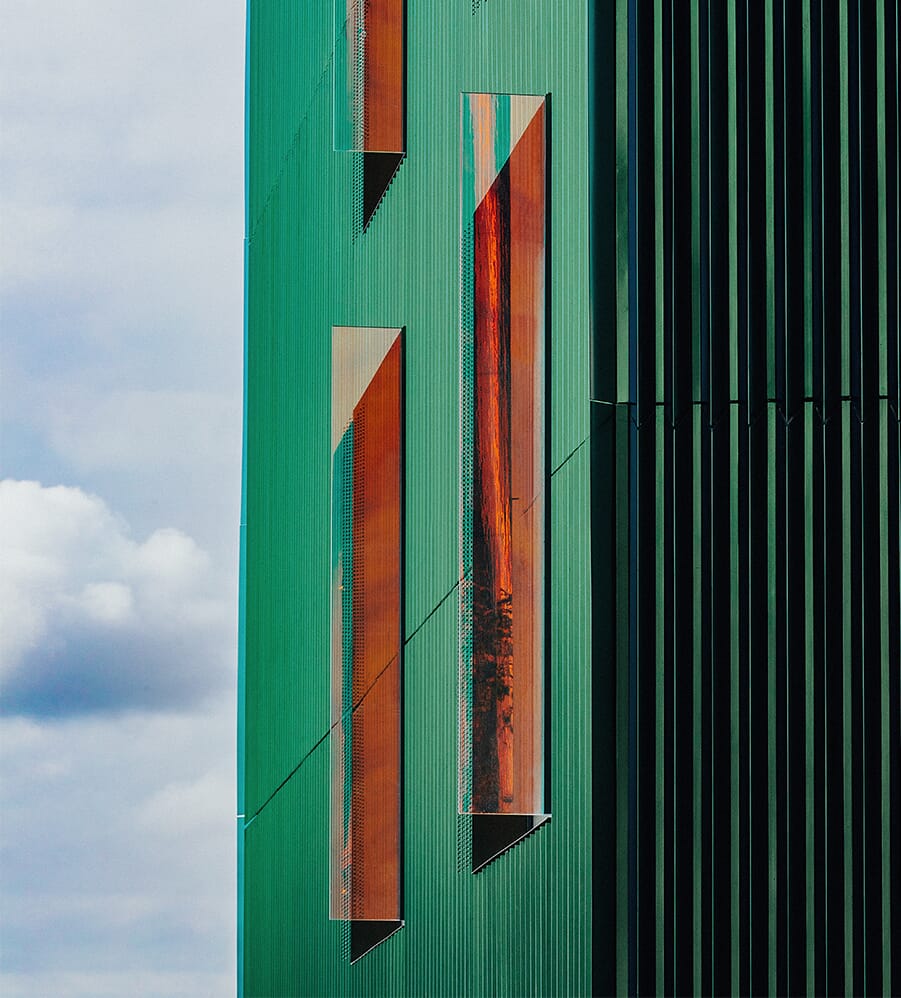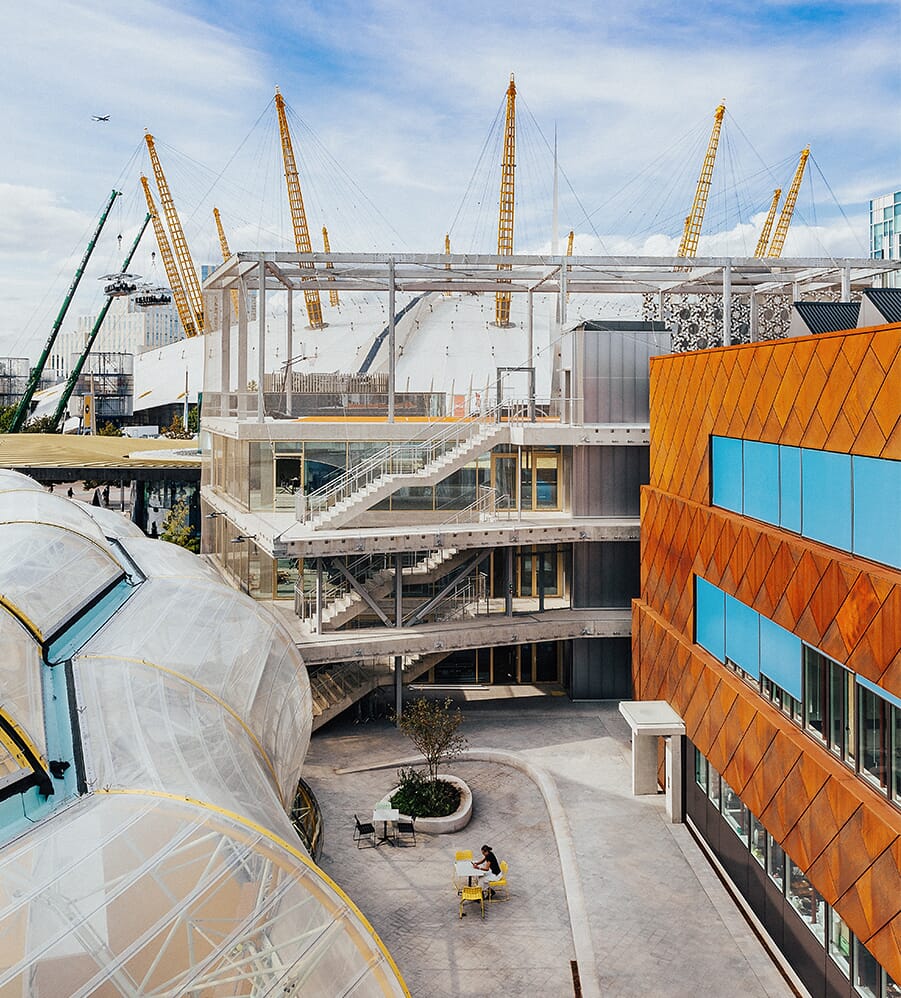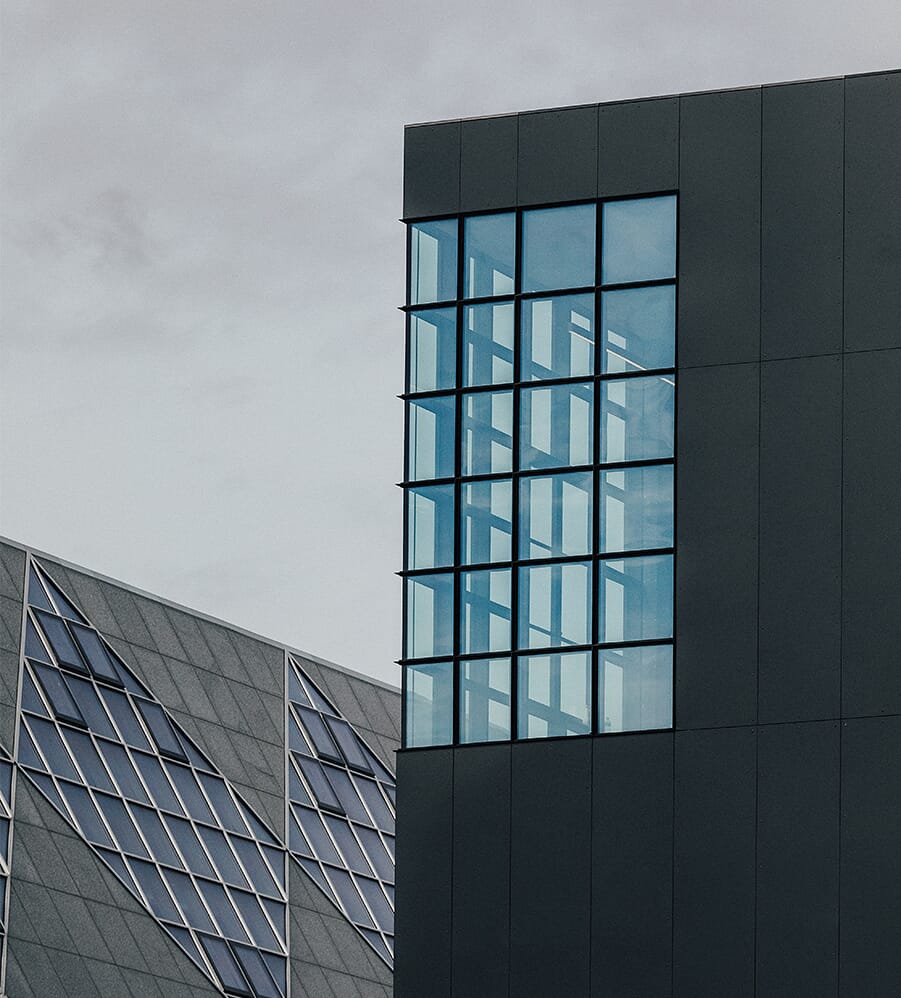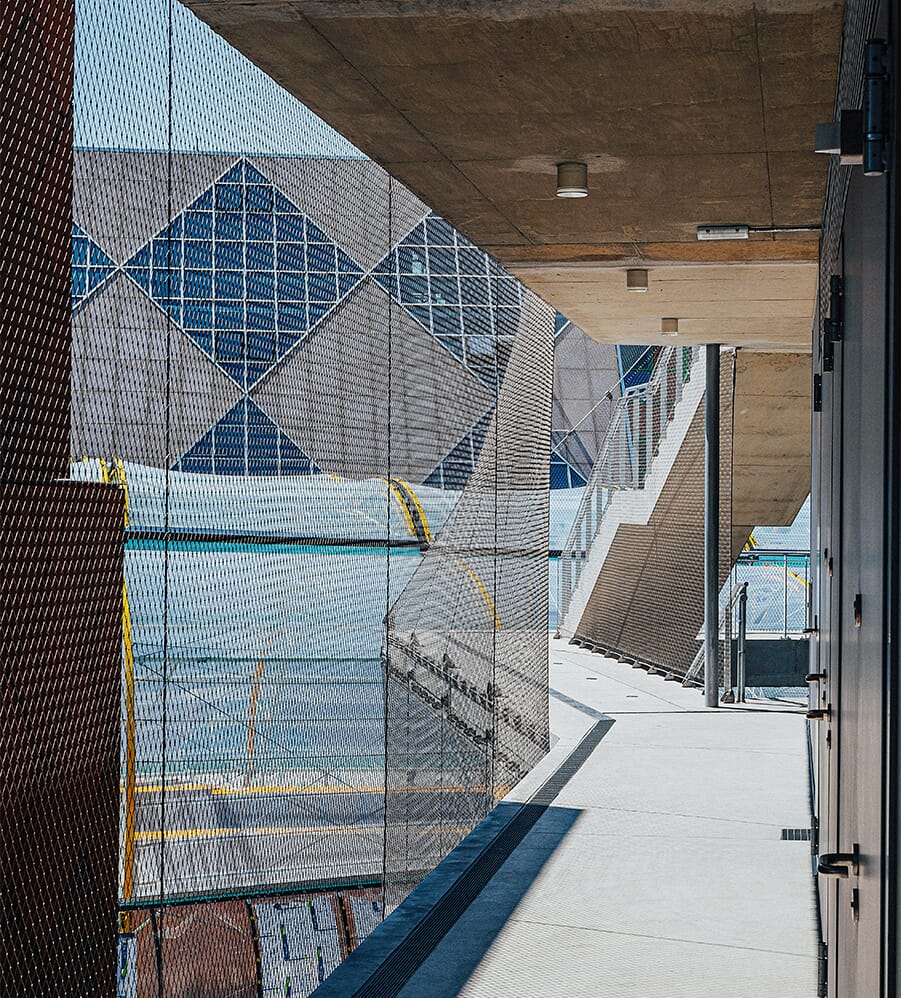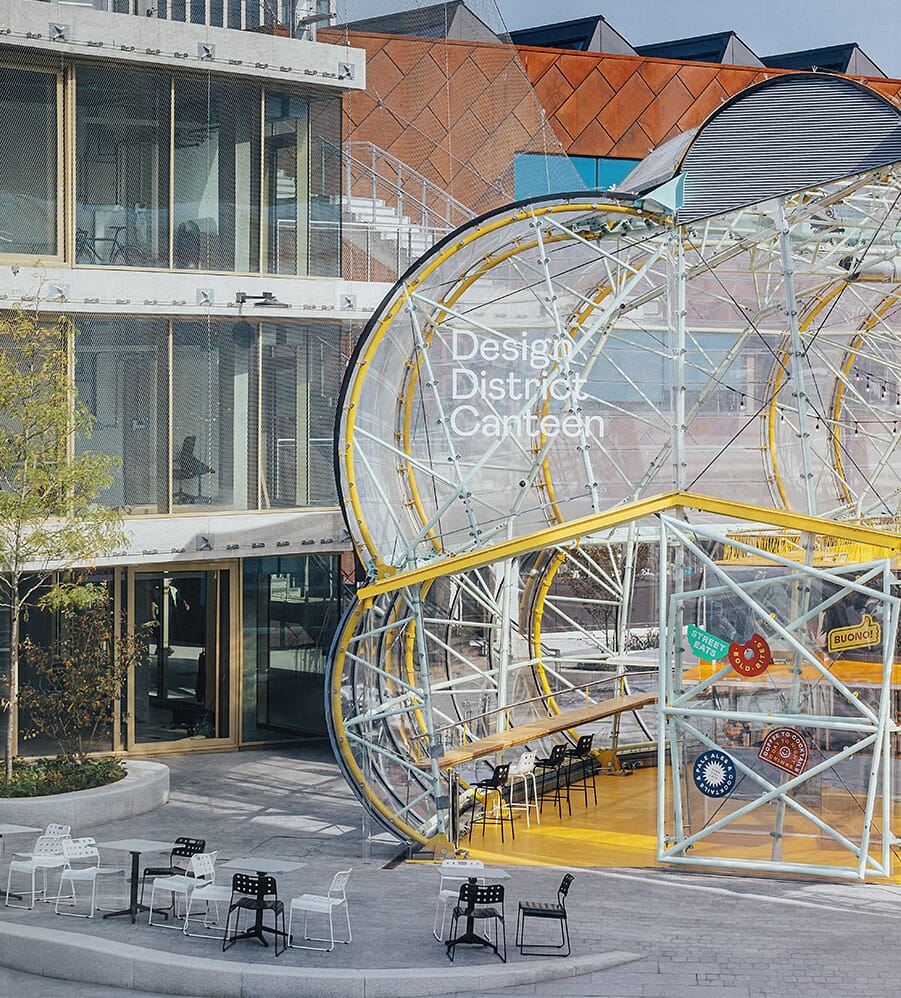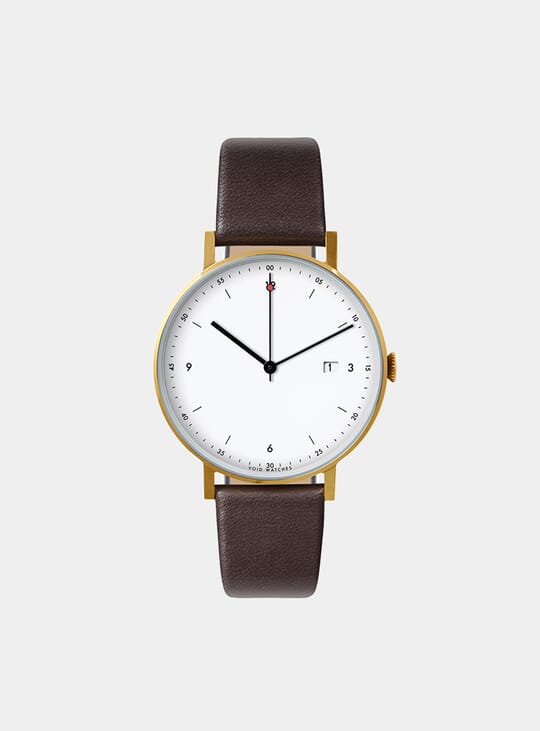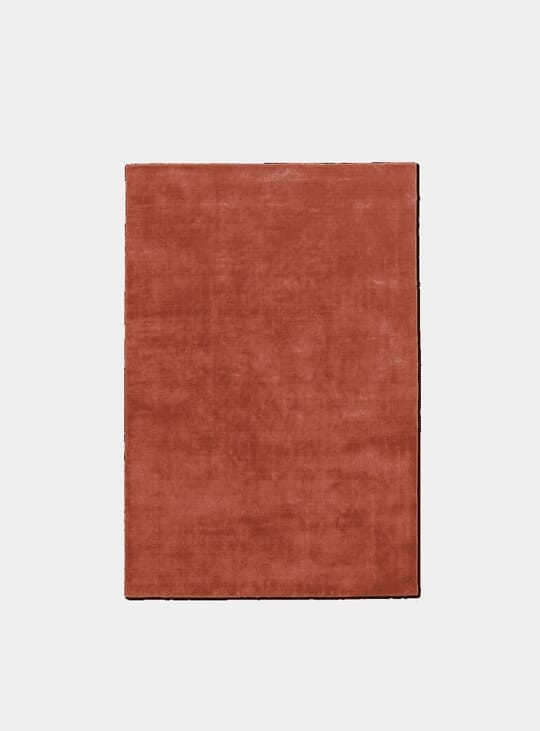It began as a piece of contaminated land adjoining the O2, the structure formerly known as the Millennium Dome. It's now home to the dramatically varied architecture of the brand new Greenwich Design District.
As befits an area with a prime view of a Dome conceived by the late architect Richard Rogers, the Design District takes its own design very seriously indeed, with no less than six architectural practices involved. The result is an extraordinary mix of styles that's unique in London.
The ambitious notion from developers Knight Dragon was that the Design District would, among others, take inspiration from Moroccan souks, those labyrinths of ancient footways and unlikely alleys, lined by vendors selling everything from pots and pans to pyramids of herbs and hand-knotted carpets. Greenwich might not sell carpets, but the Design District does create a maze of pedestrian-only walkways amid an array of eclectic architecture that's far from random in its variety.
There are 16 buildings in all which will eventually house some 1,800 people working in creative industries, defined as everything from web design to producing leather garments. It's all low-rise, to preserve views of the Dome, so there are no structures above four storeys. And what structures they are. London-based 6a architects, for example, say their twin dramatically sloped roof buildings take their inspiration from American artist Richard Artschwager’s Formica sculptures. Harlequin windows allow in ample light on the upper storeys, with space for recording and broadcast studios.
Dramatic red bases and a bold green grid mark out the two buildings designed by David Kohn Architects, who say their work takes inspiration from "the heavily adorned palazzi of the Venetian guild houses". Their playful use of colour also references the later work of the post-modernist James Stirling, architect of the Core Gallery at Tate Britain, and Robert Venturi who designed the Sainsbury Wing of the National Gallery. Two more buildings, this time by Mole Architects, reflect the history of the site as a gasworks, with one structure clad in rusting steel referencing a gasometer, and another clad in a material that responds to the light, creating, say the architects, the illusion of a gas flame-like colour.
In the middle of it all is a remarkable fully glazed area known as The Canteen, with eating places and stalls for independent designers. The architect here is the avant-garde Spanish practice SelgasCano who describe their work as "a caterpillar-shaped metal structure that glows at night, becoming a focal point for the whole neighbourhood".
Developers Knight Dragon asked architects to design buildings to create a "destination that will keep thinkers, makers and doers in the very place that brings their ideas to life". We'd say that with the Greenwich Design District, they've more than exceeded that brief. An architectural triumph.
Photography courtesy of Taran Wilkhu
These 'green buildings' showcase the possibilities of sustainable architecture.

